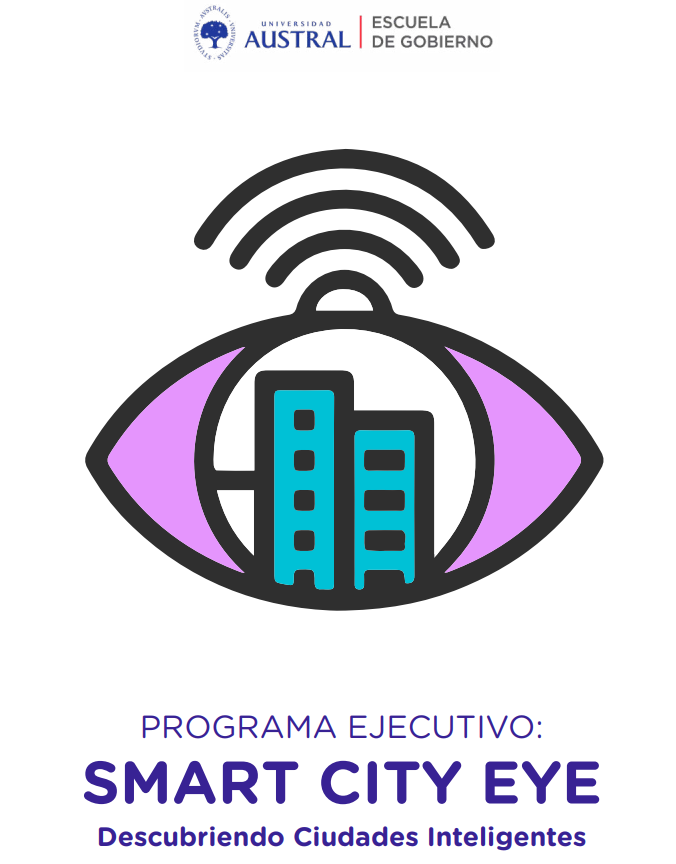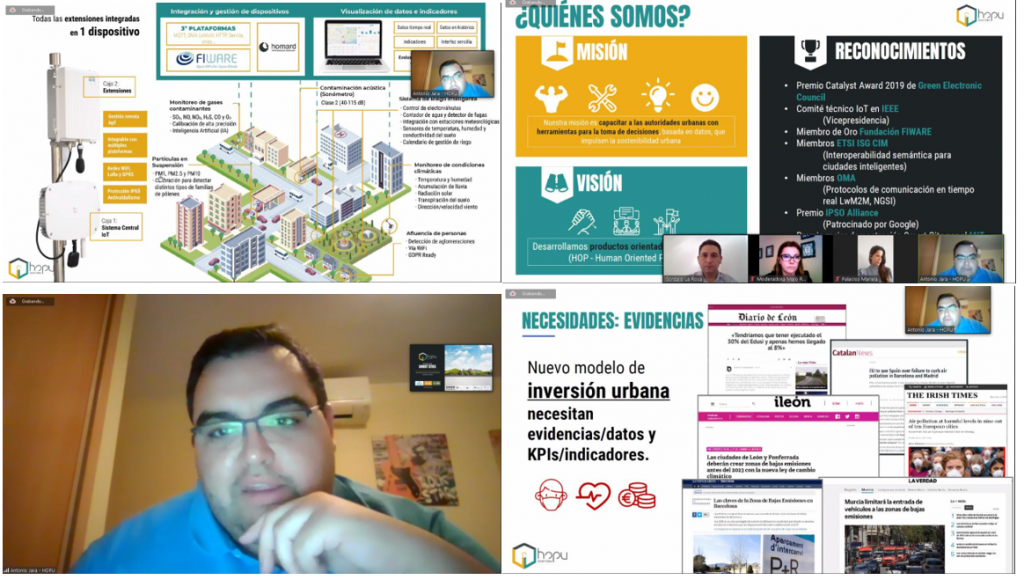Conference on integration of Air Quality monitoring solutions for smart cities and the role of Open Technologies

Dr. Antonio Jara, CEO at HOPU, participated last October 7th as a speaker in the Executive Program “Smart City Eye – Discovering Intelligent Cities”, which is part of the Smart City Diploma of the School of Government, Politics and International Relations of the Austral University of Argentina. The session was led by Gonzalo de la Rosa, director of the Institute Cities of the Future.
This executive programme is focused in a practical perspective, where the intention is to discover and analyze smart city models and good practices in the management of cities around the world, in specific those that have already begun their transformation processes towards smart and sustainable cities, aligning themselves with the Sustainable Development Goals (SDG), technology and innovation.
As an expert in solutions for the creation of smart and sustainable cities, Antonio reported on the integration of solutions for air quality measurement for smart cities and the role of open technologies, such as FIWARE, in European cities, including use cases, such as Madrid with the Madrid Central project.
A new investment model has emerged in cities
Antonio highlighted the existence of a new model of investment by cities, which addresses the current need for executing their investment as if they were companies, seeking optimum returns and guaranteeing objectives, considering socio-economic aspects and the vulnerability of minorities. Furthermore, he highlighted the commitment of the urban authorities with respect to energy saving, emissions reduction and the reduction of socio-economic gaps, whose results must be demonstrated with indicators and data that show that the established SDG are actually being met.

Among the new investment instruments, the so-called Green Deal stands out, which is led by Ursula von der Leyen, President of the European Commission. Its main characteristic is that is worth one trillion euros to achieve a green and sustainable European continent by 2030.
“Cities are being penalized for failing to address their air quality and pollution issues tangentially, which must be in line with the new European regulations on Low Emission Zones (LEZ) and urban health”
In this context, a lack of evidence through contextual data has been detected. These data allow cities to understand their environment and identify the main sources of pollution in the different areas of the city, such as gases (SO2, NO, NO2, CO, O3…), particulate matter (PM1, PM2.5, PM10), influx of people, noise pollution and even climate data.
Avoiding penalties for non-compliance with European air quality regulations has therefore become one of the main priorities in cities. That is why cities, such as Madrid, are investing in the development of highly disruptive air quality monitoring solutions through public procurement for innovation, in order to address the lack of data quality of other existing solutions. In this way, the creation of new value-added services is sought, such as Low Emission Zones, Pollution Source Service, Pollen Service, SDG, or Urban Health.
“From 2021, cities with more than 50,000 inhabitants will be obliged to create LEZ programmes and restricted mobility areas, in order to keep aligned with their SDG”
New solutions to offer contextual data from cities and powered by algorithms. In specific, these solutions are based on dashboards and visualization tools that allow a simple and agile integration, offering data in form of liveability indicators both for citizens and city managers. These integrated data can come from multiple data sources, such as satellite (Sentinel, Copernicus, etc.) or local reference stations for in situ monitoring, all of which can be integrated into smart platforms such as FIWARE, a leader in Europe, based on open standards and supported by multiple organizations, such as the OASC and IoT companies, such as HOPU.
Finally, Antonio stressed the importance of the integration of services for urban planning based on contextual data so that urban authorities can detect their main urban challenges, which can be monitored to check the effectiveness of the sustainable development initiatives carried out. In this way, it is possible to speed up urban design processes, access new funding and offer reliable high-quality data to support informed decision making and allow traceability of the evolution of the urban environment.
